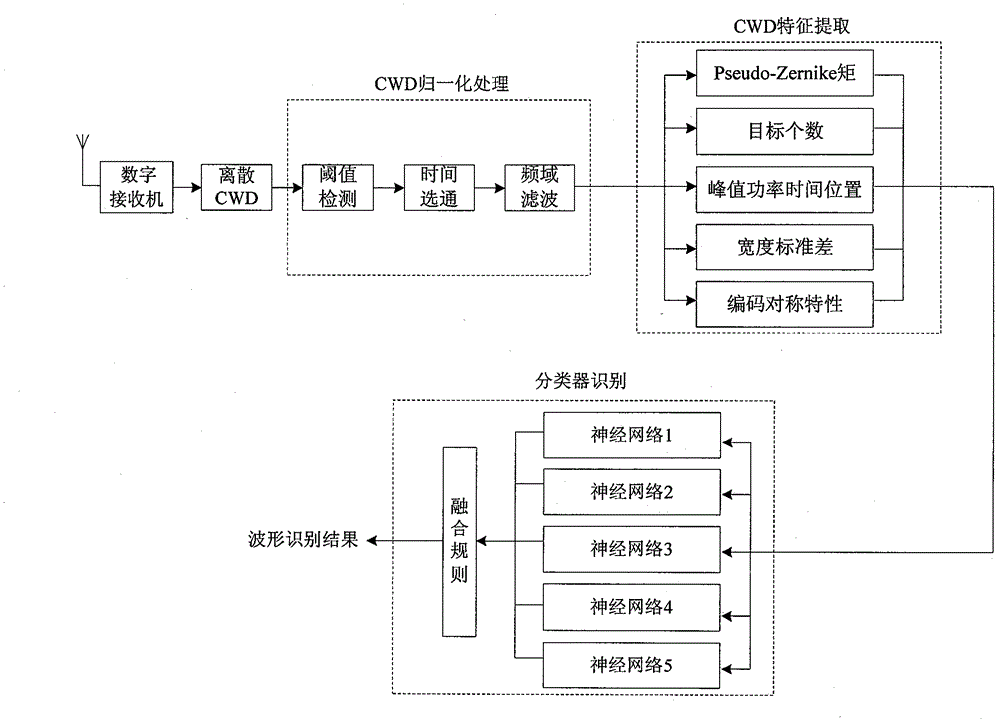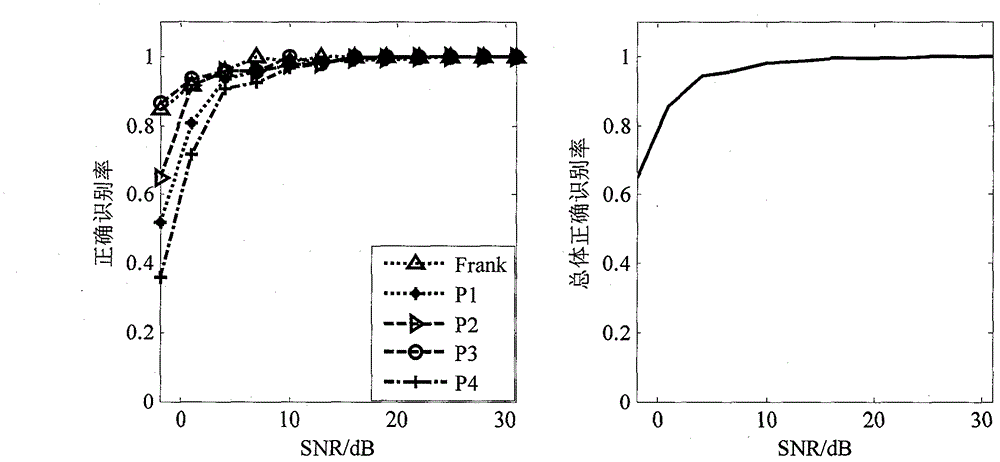Poly-phase code radar signal waveform automatic identification method based on continuous wave Doppler (CWD) feature
A radar signal, polyphase coding technology, applied in radio wave measurement systems, instruments, etc., can solve the problem of high signal-to-noise, and achieve the effect of high recognition accuracy
- Summary
- Abstract
- Description
- Claims
- Application Information
AI Technical Summary
Problems solved by technology
Method used
Image
Examples
Embodiment Construction
[0013] Assuming that the radar signal received by the reconnaissance receiver is mixed with additive white Gaussian noise (AWGN), and the signal has been processed into a baseband signal, the complex envelope of the received radar signal y(t) is as follows:
[0014] y(t)=x(t)+ω(t) (1)
[0015] Where x(t) is the complex envelope of the radar radiation signal (including only one symbol period), and ω(t) is the cyclic additive white Gaussian noise.
[0016] The phase-encoded complex signal of radar radiation is expressed as follows:
[0017] x ( t ) = Ae j ( 2 π f c t + φ i ) - - - ( 2 )
[0018] Among them, A is the signal amplitude, f c Is the signal carrier frequency, φ i It is a sequence of discrete phases of the signal, each phase has the same duration. The mathematical models of five polyphase coded radar signals to be studied are given below.
[0019] The Frank code signal is a step approximation to the LFM signal. It u...
PUM
 Login to View More
Login to View More Abstract
Description
Claims
Application Information
 Login to View More
Login to View More - R&D
- Intellectual Property
- Life Sciences
- Materials
- Tech Scout
- Unparalleled Data Quality
- Higher Quality Content
- 60% Fewer Hallucinations
Browse by: Latest US Patents, China's latest patents, Technical Efficacy Thesaurus, Application Domain, Technology Topic, Popular Technical Reports.
© 2025 PatSnap. All rights reserved.Legal|Privacy policy|Modern Slavery Act Transparency Statement|Sitemap|About US| Contact US: help@patsnap.com



